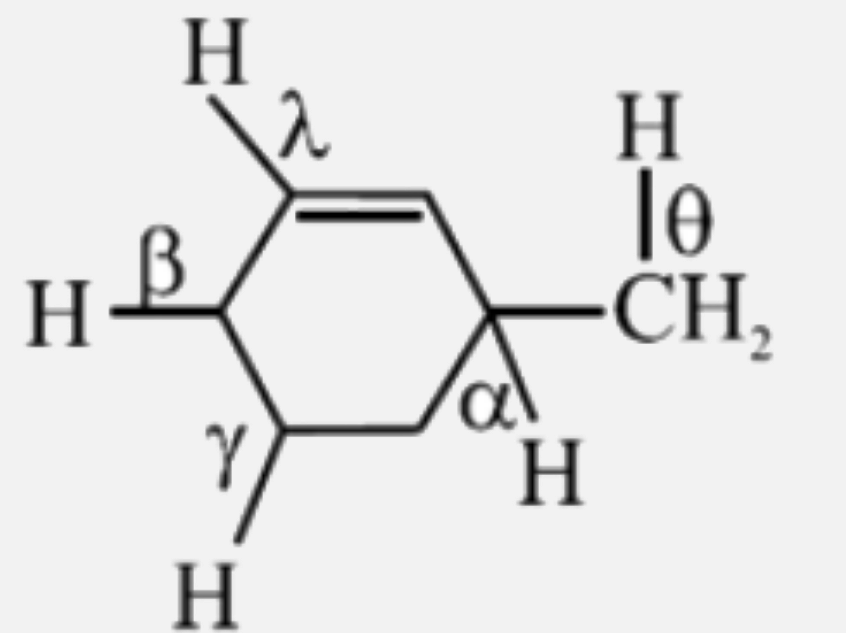The correct order in which oxygen - oxygen bond dissociation energy increases is
The correct Answer is:B
To determine the correct order in which the oxygen-oxygen bond dissociation energy increases, we need to analyze the bond types present in different compounds containing oxygen. The compounds we will consider are H2O2 (hydrogen peroxide), O3 (ozone), and O2 (dioxygen).
1. Understanding Bond Dissociation Energy:
- Bond dissociation energy is the energy required to break a bond in a molecule. Higher bond dissociation energy indicates a stronger bond.
2. Identify the Types of Bonds:
- H2O2: Contains an O-O single bond.
- O3: Contains a resonance structure with a partial double bond character between the oxygen atoms.
- O2: Contains a double bond (O=O).
3. Bond Strength and Length:
- Bond strength is inversely proportional to bond length. A shorter bond length typically corresponds to a stronger bond.
- In H2O2, the O-O bond is the longest and weakest because it is a single bond.
- In O3, the bond length is shorter than in H2O2 due to the partial double bond character, making it stronger than the O-O bond in H2O2.
- In O2, the bond length is the shortest due to the double bond, making it the strongest.
4. Order of Bond Length:
- H2O2 (longest bond length, weakest bond) < O3 (intermediate bond length, stronger than H2O2) < O2 (shortest bond length, strongest bond).
5. Order of Bond Dissociation Energy:
- Since bond dissociation energy is inversely proportional to bond length, the order of bond dissociation energy will be the reverse of the bond length order.
- Therefore, the order of bond dissociation energy is:
- O2 (highest energy) > O3 > H2O2 (lowest energy).
6. Final Conclusion:
- The correct order in which oxygen-oxygen bond dissociation energy increases is:
- H2O2 < O3 < O2.
- Bond dissociation energy is the energy required to break a bond in a molecule. Higher bond dissociation energy indicates a stronger bond.
- H2O2: Contains an O-O single bond.
- O3: Contains a resonance structure with a partial double bond character between the oxygen atoms.
- O2: Contains a double bond (O=O).
- Bond strength is inversely proportional to bond length. A shorter bond length typically corresponds to a stronger bond.
- In H2O2, the O-O bond is the longest and weakest because it is a single bond.
- In O3, the bond length is shorter than in H2O2 due to the partial double bond character, making it stronger than the O-O bond in H2O2.
- In O2, the bond length is the shortest due to the double bond, making it the strongest.
- H2O2 (longest bond length, weakest bond) < O3 (intermediate bond length, stronger than H2O2) < O2 (shortest bond length, strongest bond).
- Since bond dissociation energy is inversely proportional to bond length, the order of bond dissociation energy will be the reverse of the bond length order.
- Therefore, the order of bond dissociation energy is:
- O2 (highest energy) > O3 > H2O2 (lowest energy).
- The correct order in which oxygen-oxygen bond dissociation energy increases is:
- H2O2 < O3 < O2.
Topper's Solved these Questions
Similar Questions
Knowledge Check
Correct order of bond dissociation energy
ABr2>Cl2BF2>Cl2Cl2>F2DF2>l2Which has the largest bond dissociation energy?
AH−FBH−CICH−BrDH−IThe oxygen dissociation curve is
AparabolaBslopeCsigmoidDstright line.
Oxygen dissociation curve is
View SolutionWhich of the following least bond dissociation energy ?
View SolutionThe decreasing order of bond dissociation energy among halogens is
View SolutionOxygen-haemoglobin dissociation curve is
View SolutionThe correct order in which the O-O bond length increases in the respectively are
View Solution
